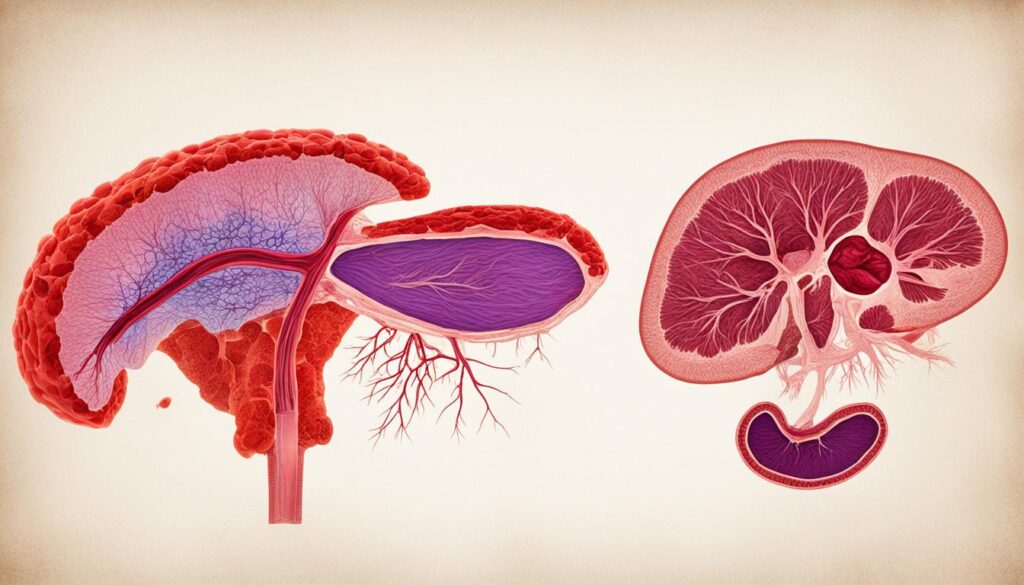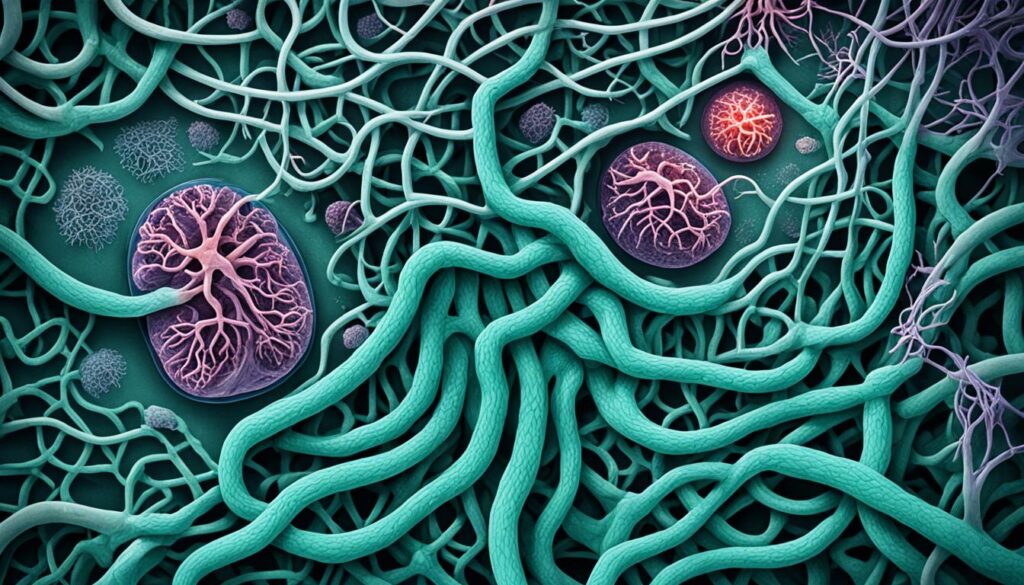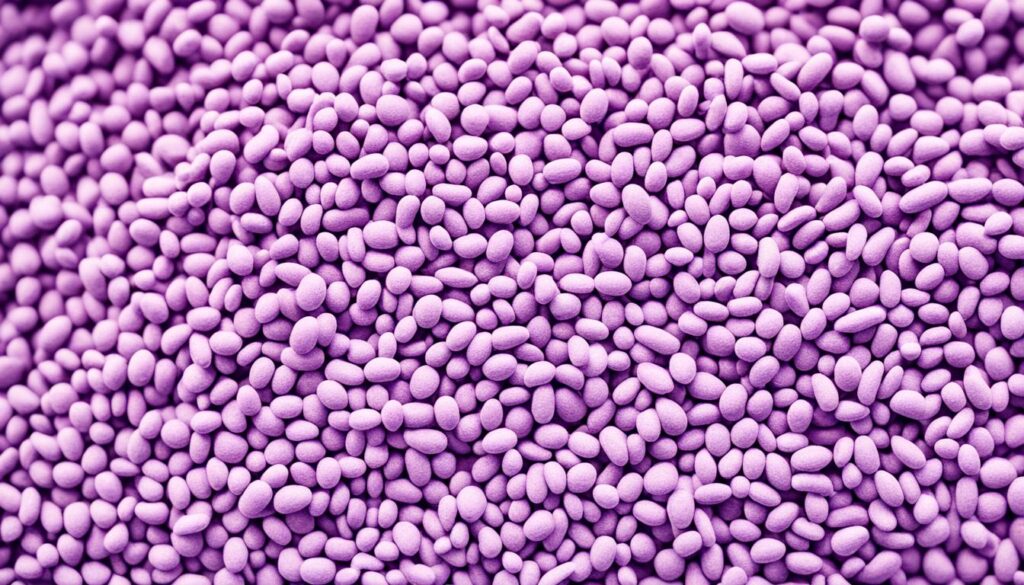Welcome to our article series on biliary atresia, a rare condition that affects newborn infants. This series will provide comprehensive information on various aspects of biliary atresia, including its causes, symptoms, diagnosis, treatment options, and long-term outlook. Suppose you or your loved one is affected by biliary atresia. In that case, it is essential to understand the condition and the available treatment options clearly.
Table of Contents
ToggleBiliary atresia is where the bile ducts between the liver and the small intestine are blocked or absent. This can lead to liver damage, and in some cases, a liver transplant may be necessary for the child’s survival. Biliary atresia is the leading cause of liver transplantation in children in the U.S.
For Indian patients, it is crucial to have access to accurate information about biliary atresia and its treatment options. In this article, we will address critical questions related to eligibility for liver transplantation, the recovery process, and the available resources for Indian patients and their families.
Throughout the series, we will provide reliable and up-to-date information to help you make informed decisions and navigate the challenges associated with biliary atresia. We understand that dealing with a rare condition can be overwhelming, but remember that you are not alone. Patient support organizations and resources, such as the American Liver Foundation and the Children’s Liver Association for Support Services, can provide guidance and emotional support.
This series will empower you with knowledge and help you advocate for the best care for yourself or your child. Let’s start by exploring the progression of biliary atresia and understanding its impact on the liver. Continue reading to learn more about this challenging condition.
Disease Progression of Biliary Atresia
In biliary atresia, the extrahepatic bile ducts undergo a progressive inflammatory process, resulting in abnormal and damaged ducts. This condition leads to the formation of biliary strictures, which impede the proper drainage of bile from the liver to the small intestine. As a result, bile accumulates within the liver, leading to several associated complications.
Jaundice: The buildup of bile in the liver causes jaundice, a condition characterized by yellowing of the skin and whites of the eyes. Jaundice is one of the primary symptoms of biliary atresia. It occurs due to elevated levels of bilirubin in the blood.
Cirrhosis: Over time, the continuous accumulation of bile within the liver can cause progressive liver damage, leading to the development of cirrhosis. Cirrhosis involves the replacement of healthy liver tissue with scar tissue, compromising liver function.
Hepatomegaly: Biliary atresia can also result in hepatomegaly, which refers to the swelling or enlargement of the liver. This enlargement occurs due to the accumulation of bile and the resulting inflammation within the liver tissue.
To summarize, disease progression in biliary atresia involves the formation of biliary strictures, which obstruct the proper flow of bile. This leads to jaundice, cirrhosis, and hepatomegaly, posing significant health challenges for affected individuals.

Causes of Biliary Atresia
The exact causes of biliary atresia still need to be better understood. However, researchers have identified several potential factors that may contribute to the development of this condition. These include:
- Infection: In some cases, biliary atresia may be triggered by a disease that occurs during fetal life or shortly after birth.
- Immune System Problems: It is believed that abnormalities in the immune system may play a role in the development of biliary atresia, although the exact mechanisms are not fully understood.
- Abnormal Bile Components: Certain abnormalities in the composition of bile, the fluid produced by the liver, may contribute to the development of biliary atresia.
- Developmental Errors: Errors in the development of the liver and bile ducts during fetal life or at birth can lead to the formation of biliary atresia.
It’s important to note that biliary atresia is not an inherited disease and does not run in families. Instead, it is thought to result from genetic and environmental factors.

Genetic and Environmental Factors
While the specific causes of biliary atresia remain unclear, ongoing research is focused on understanding the role of genetic and environmental factors in developing this condition. By studying the genes and environmental exposures of affected individuals, scientists hope to gain insight into the underlying mechanisms and identify potential targets for prevention and treatment.
Types of Biliary Atresia
In understanding biliary atresia, it is important to recognize two distinct forms of the condition: the fetal and perinatal forms. Each form has its characteristics and onset time, impacting the diagnosis and management strategies.
Fetal Form
The fetal form of biliary atresia is present at birth and develops during fetal life. This form is relatively rare and accounts for a smaller percentage of cases. Children with the fetal form may exhibit more severe symptoms and complications compared to those with the perinatal form. It is also more common for children with the fetal form of biliary atresia to have associated congenital disabilities affecting other organs, such as the heart, spleen, or intestines.
Perinatal Form
The perinatal form is the more common type of biliary atresia. It becomes evident within the second to fourth week of the infant’s life. While the perinatal form may still present with significant symptoms and complications, it tends to be less severe than the fetal form. However, it is essential to note that the perinatal form can also be associated with other congenital disabilities, although at a lower frequency.
Understanding the specific type of biliary atresia a child may have is crucial for developing a comprehensive treatment plan and providing appropriate care. Medical professionals will consider factors such as biliary atresia, associated congenital disabilities, and overall health to tailor treatment and management approaches for each case.

Next, we delve into the various symptoms that can indicate the presence of biliary atresia. Stay informed to better recognize the signs and seek timely medical attention.
Symptoms of Biliary Atresia
If your child has biliary atresia, you should be aware of several symptoms. The primary symptom is jaundice, characterized by the yellowing of the skin and whites of the eyes. This occurs due to the buildup of bilirubin, a yellow pigment, in the body.
Other noticeable symptoms include darkening of the urine, which occurs due to the high levels of bilirubin being excreted by the kidneys. Additionally, you may observe light-colored stools in your child. This is because the absence of bilirubin reaching the intestines results in pale or clay-colored stools.
Suppose your child continues to show signs of jaundice after two weeks of life. In that case, it is essential to consult a healthcare professional to evaluate for possible liver dysfunction.
Diagnosis of Biliary Atresia
If your newborn experiences worsening jaundice during the first month of life, it may indicate a liver problem. To accurately diagnose biliary atresia, doctors will perform a series of tests, including blood tests, imaging tests such as abdominal ultrasound and HIDA scan, and, in some cases, a liver biopsy. It’s important to seek evaluation by a pediatric liver specialist for a comprehensive assessment and precise diagnosis.

Step-by-step Diagnosis Process
- Blood tests: Doctors will analyze blood samples to assess liver function, measure bilirubin levels, and identify abnormalities that may suggest biliary atresia.
- Imaging tests: Abdominal ultrasound and HIDA scan are common imaging tests used to evaluate the liver and bile ducts. These tests can help identify any blockages or structural abnormalities.
- Liver biopsy: Sometimes, a liver biopsy may be necessary to confirm the diagnosis. During a liver biopsy, a small piece of liver tissue is extracted and examined under a microscope for signs of biliary atresia.
The combination of these diagnostic tests allows healthcare professionals to accurately diagnose biliary atresia and determine the most appropriate treatment plan for your child.
Kasai Procedure for Biliary Atresia
If a diagnosis of biliary atresia is confirmed, a surgical procedure called the Kasai Procedure, or hepato-portoenterostomy is performed. This procedure involves the reconstruction of the bile ducts and the restoration of bile flow.
The blocked extrahepatic bile ducts are replaced with a segment of the child’s intestine, which functions as the new bile duct system.
- Bile duct reconstruction: The Kasai Procedure aims to reconstruct the blocked bile ducts, allowing the proper flow of bile from the liver to the intestines.
- Bile flow restoration: The procedure restores the normal flow of bile by replacing the damaged bile ducts with a segment of the intestine, preventing further damage to the liver and improving overall liver function.
Liver Transplantation for Biliary Atresia
If the Kasai Procedure is unsuccessful or the disease progresses, a liver transplant may be necessary. Around half of infants who undergo a Kasai Procedure still require a transplant before the age of 5. Liver transplantation is a highly successful treatment for biliary atresia, with improved survival rates in recent years. Advances in treatment have also made it possible to use “reduced size” or “split liver” transplants, where a piece of an adult liver can be used for transplantation in a child with biliary atresia.
Improved Outcomes
In recent years, advancements in liver transplantation have significantly improved outcomes for children with biliary atresia. The survival rates for liver transplants have increased, giving children a better chance at a healthy future. With the availability of “reduced size” or “split liver” transplants, the donor pool has expanded, making it possible to find suitable donors for pediatric patients.
| Liver Transplantation for Biliary Atresia | Improved Outcomes |
|---|---|
| – A highly successful treatment | – Increased survival rates |
| – Often necessary if the Kasai Procedure fails | – Expanded donor pool with “reduced size” or “split liver” transplants |
| – Approximately 50% of infants who undergo a Kasai Procedure require a transplant before age 5 |
Long-Term Outlook and Prognosis
The long-term outcome for individuals with biliary atresia can vary, depending on the severity of the condition and the effectiveness of the treatment. While some children may require ongoing medical care and surveillance, others may need to undergo liver transplantation for better long-term survival and quality of life. Thanks to advancements in surgical techniques and medical management, children with biliary atresia can now survive well into adulthood.
Long-Term Outcome
The long-term outcome of biliary atresia depends on several factors, including:
- The extent of liver damage
- The success of surgical interventions
- The overall health of the individual
Children who receive early and appropriate treatment, such as the Kasai Procedure, have a higher chance of long-term survival and improved liver function. However, some children may still require ongoing medical attention and close monitoring due to the progressive nature of the disease.
Liver Transplantation
For children with severe liver damage or those who do not respond well to other treatments, liver transplantation may be the best option. Liver transplantation can provide a long-term solution, offering improved liver function and a better quality of life. With advancements in transplantation procedures and immunosuppressive medications, the success rates for liver transplantation in biliary atresia have significantly improved.
The table below shows the long-term survival rates for individuals with biliary atresia who undergo liver transplantation:
| Time Since Transplantation | Survival Rate |
|---|---|
| 1 year | 85% |
| 5 years | 75% |
| 10 years | 65% |
| 20 years | 50% |
These statistics highlight the favorable long-term outlook for individuals who undergo liver transplantation for biliary atresia. It’s important to note that survival rates can vary based on individual circumstances, including age at transplantation and overall health.
With proper post-transplant care and adherence to a healthy lifestyle, individuals with biliary atresia can lead fulfilling lives well into adulthood.
Research and Studies on Biliary Atresia
Ongoing research is being conducted to investigate the causes and treatment of liver disease biliary atresia in children. These efforts aim to shed light on the genetic and environmental factors that may contribute to the disease’s development. By understanding the underlying causes, researchers can develop more effective treatment options and preventive measures for children with biliary atresia.
Clinical trials play a significant role in advancing our knowledge of biliary atresia. These trials involve testing new therapies, medications, and surgical approaches to improve patient outcomes. By participating in clinical trials, patients and their families contribute to the progress of medical science and gain access to cutting-edge treatments and specialized care.
In addition to clinical trials, databases are being utilized to gather valuable information on biliary atresia and related liver diseases. These databases serve as comprehensive patient data repositories, allowing researchers to analyze trends, outcomes, and treatment responses. The insights gained from these databases can help identify patterns, optimize treatment protocols, and facilitate further research on biliary atresia in children.
Current Research Focus Areas:
- Exploring the genetic factors associated with biliary atresia
- Investigating the role of environmental triggers in disease development
- Assessing the effectiveness of new medications and therapies in clinical trials
- Studying long-term outcomes and survival rates in patients with biliary atresia
The research and studies conducted on biliary atresia promise to improve the diagnosis, treatment, and long-term outcomes for affected children. By continuing to invest in research, we have the potential to enhance the quality of life for individuals with biliary atresia and provide hope for a brighter future.
Current Research Studies
| Study Title | Research Institution | Focus Area |
|---|---|---|
| A Genetic Study of Biliary Atresia | ABC Research Institute | Genetic factors and disease development |
| Effectiveness of Novel Medications in Biliary Atresia Treatment | XYZ Hospital | Clinical trials and treatment optimization |
| Long-Term Outcomes in Biliary Atresia Survivors | University of Medical Sciences | Survival rates and quality of life |
Patient Support and Resources
Dealing with biliary atresia can be challenging for both children and their families. Fortunately, organizations are dedicated to providing patient support, resources, and information to help navigate this journey. The American Liver Foundation and the Children’s Liver Association for Support Services (CLASS) are two such organizations that offer invaluable assistance.
American Liver Foundation
The American Liver Foundation (ALF) supports individuals and families affected by liver diseases, including biliary atresia. They offer various resources, including:
- Education: The ALF website provides comprehensive information about biliary atresia, its treatment options, and the latest research advancements. It also offers educational materials and webinars to help families better understand the condition.
- Patient Support: The ALF provides a platform for patients and families to connect with others who have gone through similar experiences. They offer support groups, online forums, and mentorship programs to facilitate emotional support and encouragement.
- Advocacy: The ALF advocates for policy changes and increased funding for liver disease research. They collaborate with policymakers, healthcare providers, and other organizations to improve the lives of individuals with biliary atresia.
Children’s Liver Association for Support Services (CLASS)
The Children’s Liver Association for Support Services (CLASS) is a nonprofit organization that supports the needs of children and families affected by liver diseases, including biliary atresia. CLASS offers a range of resources and support programs, including:
- Family Support: CLASS provides emotional support and resources to families through local chapters and online platforms. They have support groups, virtual meetings, and discussion forums where families can connect, share experiences, and find solace.
- Financial Assistance: CLASS offers financial assistance programs to help families overcome the economic burden of medical treatments, medications, and other related expenses. These programs aim to ensure that every child has access to the care they need.
- Education and Awareness: CLASS conducts educational campaigns and community outreach programs to raise awareness about biliary atresia and promote early detection. They provide educational materials, brochures, and webinars to empower families with knowledge.
The American Liver Foundation and CLASS can be invaluable resources for families coping with biliary atresia. The emotional support, information, and research developments they provide can make a significant difference in the lives of affected individuals. By connecting with these organizations, families can access a support network and gain the tools necessary for navigating the challenges posed by this condition.
| Organizations | Services Offered |
|---|---|
| American Liver Foundation (ALF) |
|
| Children’s Liver Association for Support Services (CLASS) |
|
Conclusion
In conclusion, biliary atresia is a rare condition that affects newborn infants, requiring early surgical intervention to prevent liver damage. The Kasai Procedure is a commonly performed surgery that aims to reconstruct the blocked bile ducts and restore proper bile flow. However, in cases where the disease progresses or the Kasai Procedure is unsuccessful, a liver transplant may be necessary for eligible patients.
Advancements in surgical techniques and treatment options have significantly improved the success and survival rates for children with biliary atresia. Liver transplantation, in particular, has shown promising outcomes for eligible patients, providing them with a new lease on life. The medical team will determine the eligibility for a liver transplant based on various factors, such as the severity of the disease and the patient’s overall health.
Recovery from a liver transplant can be a challenging journey. Still, with proper medical care and support, Indian patients with biliary atresia can regain their health and live fulfilling lives. Ongoing research is crucial to further understanding biliary atresia’s causes and identifying better treatment options. Additionally, patient support resources are available to provide emotional support and information to families dealing with this condition.
Suppose you or your loved one is affected by biliary atresia. Consulting with a medical professional specializing in pediatric liver disorders is essential. They can guide you through the necessary steps for diagnosis, treatment, and ongoing management, ensuring the best possible outcome for Indian patients with biliary atresia.
FAQ
What is biliary atresia?
Biliary atresia is rare in newborn infants where the bile ducts between the liver and the small intestine are blocked or absent.
What is the leading cause of liver transplantation in children in the U.S.?
Biliary atresia is the leading cause of liver transplantation in children in the U.S.
What causes biliary atresia?
The exact causes of biliary atresia are not well understood, but it is hypothesized that events during fetal life or at birth may trigger the disease.
What are the types of biliary atresia?
There are two types of biliary atresia: the fetal form, which is present at birth and develops during fetal life, and the more common perinatal form, which becomes evident in the second to fourth week of the infant’s life.
What are the symptoms of biliary atresia?
The primary symptom of biliary atresia is jaundice, which causes yellowing of the skin and whites of the eyes. Other symptoms include darkening of urine and lightening of stool color.
How is biliary atresia diagnosed?
Biliary atresia is diagnosed through blood tests, imaging tests like an abdominal ultrasound and HIDA scan, and sometimes a liver biopsy.
What is the Kasai Procedure for biliary atresia?
The Kasai Procedure, or hepato-portoenterostomy, is a surgical procedure that reconstructs the bile ducts and restores bile flow.
When is a liver transplant necessary for biliary atresia?
If the Kasai Procedure is unsuccessful or the disease progresses, a liver transplant may be necessary.
What is the long-term outlook for individuals with biliary atresia?
The long-term prognosis for individuals with biliary atresia varies. Still, with improved surgical techniques and medical management, children with biliary atresia can survive well into adulthood.
What research is being done on biliary atresia?
Ongoing research is being conducted to investigate the causes and treatment of biliary atresia, with studies examining genetic and environmental factors and utilizing clinical trials and databases.
Where can I find patient support and resources for biliary atresia?
Organizations like the American Liver Foundation and the Children’s Liver Association for Support Services provide resources and support for families coping with biliary atresia.
Source Links


